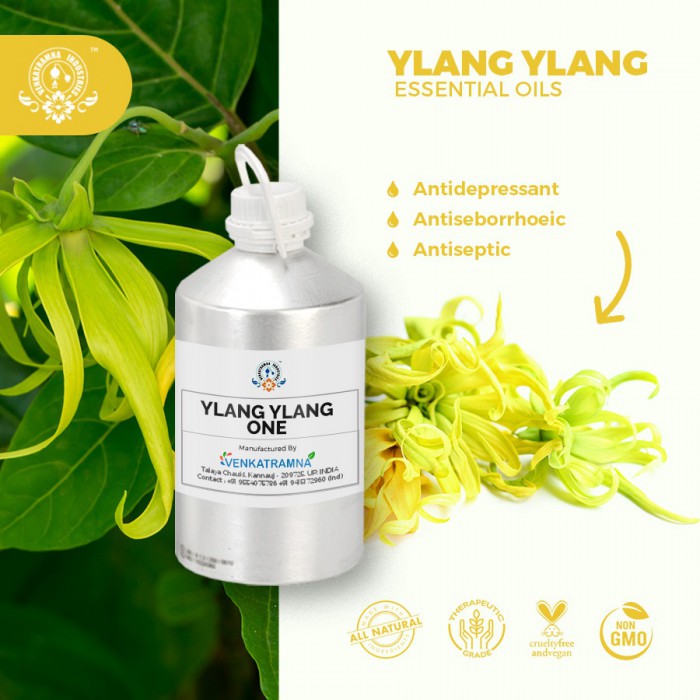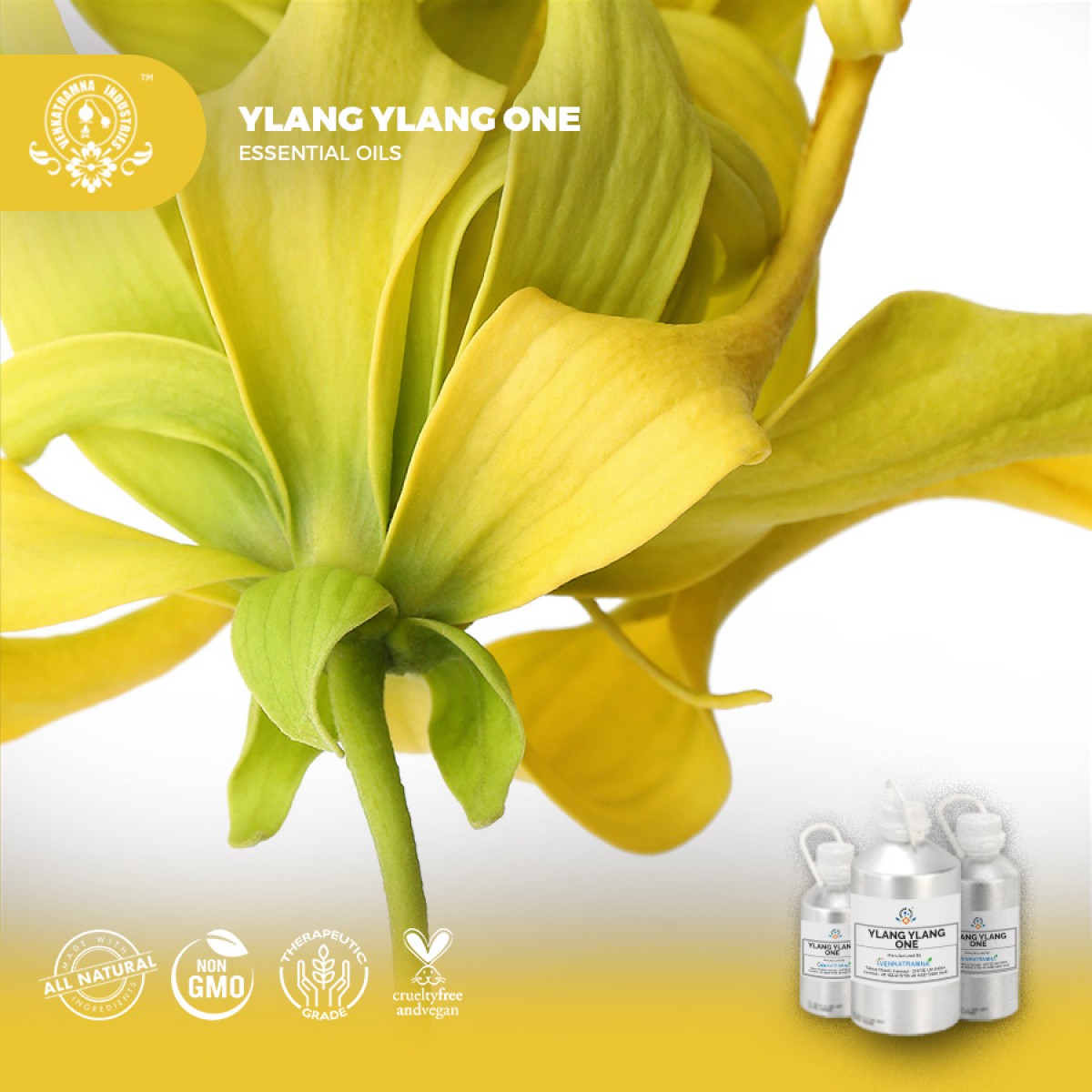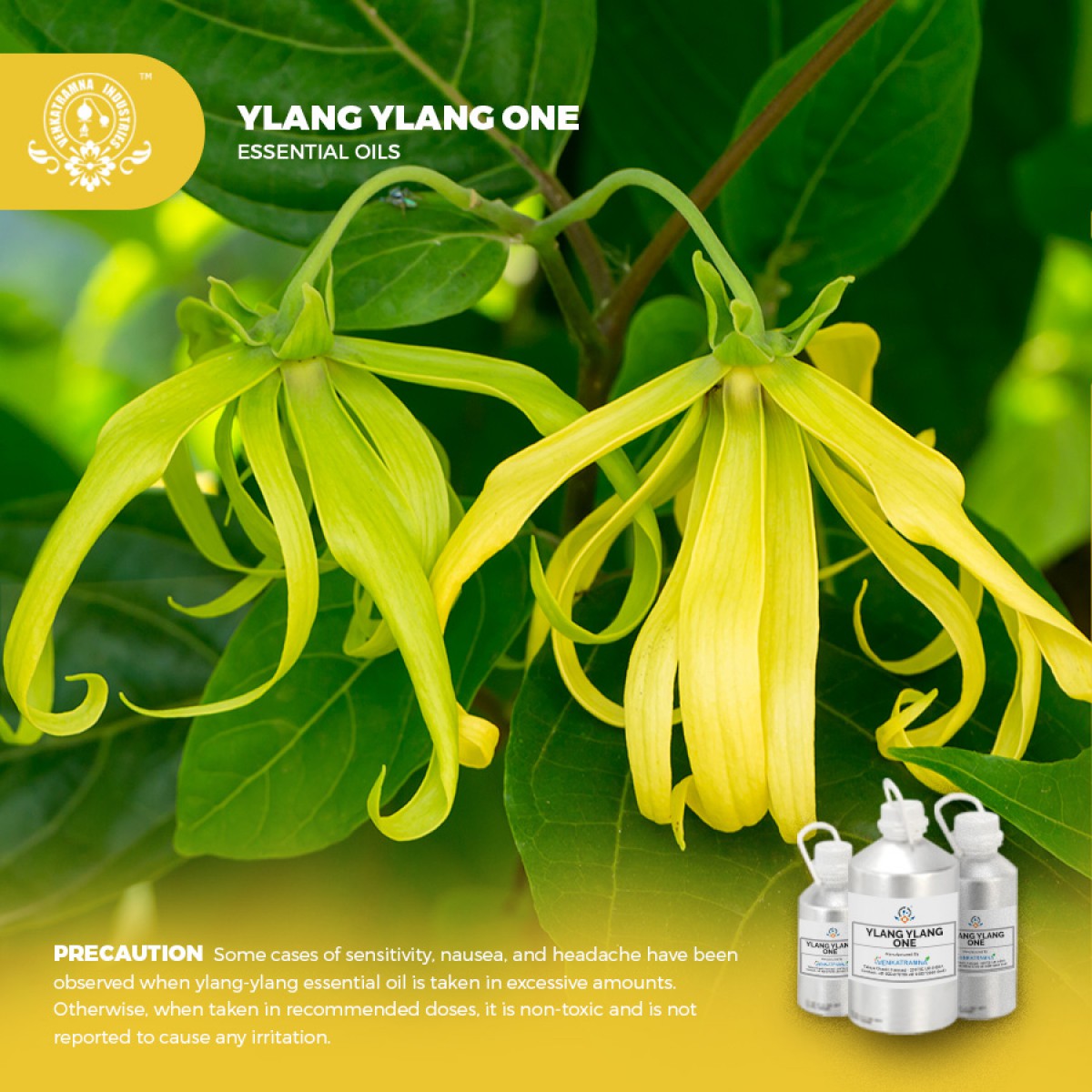Botanical Name: Cananga odorata Common name: Ylang-ylang, Chape Pl Read More
|
Botanical
Name: |
Cananga odorata |
|
Common name: |
Ylang-ylang, Chape |
|
Plant family: |
Asteraceae |
|
Genus: |
Cananga |
|
Appearance/Color: |
A thin, clear, pale yellow liquid. |
|
Odor: |
Ylang Ylang essential oil holds exotic, sweet and floral scent
which is not commonly available in other oils. This makes it secure as a base
note along with having a medium aroma. |
|
Blends With: |
Grapefruit, Neroli, Bergamot, Rosewood, Lavender and
Sandalwood to process other beneficial products. |
|
Origin: |
Medagascar |
|
Source: |
Aerial parts |
|
Method
of Extraction: |
Steam Distillation |
Cananga odorata, which is commonly called ylang-ylang, is
a fast-growing tree and can found natively in tropical Asia such as
Philippines, Malaysia, Indonesia, and some other islands of Indian Ocean,
mainly the Comoro, Nossi Be, and Madagascar islands. Commercial cultivation
of C. odorata to produce ylang-ylang oil started in the
Philippines, later followed by the production of cananga oil in Indonesia. The
First World War almost destroyed ylang-ylang cultivation in the Philippines,
only one plantation continuing cultivation until the Second World War. In the
Philippines C. odorata is now a smallholder crop grown almost
exclusively for local use. In 1770 C. odorata was brought from
the Philippines to Réunion, where commercial production of ylang-ylang oil
started a century later. Production grew steadily but declined sharply during
the First World War; it never recovered, and production virtually ceased during
the economic depression of the 1930s. In the beginning of the 20th
Century C. odorata was introduced into the Comoro Islands,
where an important industry developed. Production peaked during the 1980s, but
then declined due to the development of tourism and expansion of food
production. Similarly, an ylang-ylang industry developed in the northern
Madagascan island Nosy Bé; it peaked around 1950 and then gradually declined.
In Guangdong Province in southern China, production started recently and is
still expanding. Indonesia, the Comoro Islands and Nosy Bé are the main
exporters of ylang-ylang oil. Java is the main producer of cananga oil; outside
Java, the production of cananga oil is only important in Fiji.
According to the plant list, there are more than twenty synonyms which have been recorded for C. odorata. For instance, Cananga mitrastigma (F. Muell.) Domin, Canangium mitrastigma (F. Muell.) Domin, Cananga odorata var. odorata, Cananga odoratum (Lam.) Baill. ex King, Canangium odoratum (Lam.) Baill. ex King, Canangium odoratum var. velutinum Koord. & Valeton, Cananga scortechinii King, Canangium scortechinii King, Fitzgeraldia mitrastigma F. Muell., Unona cananga Spreng., Unona leptopetala DC., Unona odorata (Lam.) Dunal, Unona odorata (Lam.) Baill., Unona odoratissima Blanco, Unona ossea Blanco, Uvaria axillaris Roxb., Uvaria cananga Banks, Uvaria odorata Lam., Uvaria ossea (Blanco) Blanco, and Uvaria trifoliata Gaertn.
DISCLAIMER
The complete range of conditions
or methods of use are beyond our control therefore we do not assume any
responsibility and expressly disclaim any liability for any use of this
product. Information contained herein is believed to be true and accurate however,
all statements or suggestions are made without warranty, expressed or implied,
regarding accuracy of the information, the hazards connected with the use of
the material or the results to be obtained from the use thereof. Compliance
with all applicable federal, state, and local laws and local regulations
remains the responsibility of the user.
The FDA has not evaluated the
statements on this website. No claims are made by Venkatramna Industries as to
the medicinal value of any products from vriaroma.com or by us. The information
presented here is for educating our customers about the traditional uses of
essential oils and is not intended to diagnose, treat, cure, or prevent any
disease. You are responsible for understanding the safe application of these products.
If you have any questions, please call or email us for further information.
As per NAHA guidelines, New Directions Aromatics (NDA) does not recommend the ingestion of essential oils. It is imperative to consult a medical practitioner before using Essential Oils for therapeutic purposes. Pregnant and nursing women and those taking prescription drugs are especially advised not to use this product without the medical advice of a physician. The oil should always be stored in an area that is inaccessible to children, especially those under the age of 7.
C. odorata is used to treat malaria, stomach ailments, asthma,
gout, and rheumatism. The essential oils or ylang-ylang oil is used in
aromatherapy and is believed to be effective in treating depression, high blood
pressure, and anxiety. Many phytochemical studies have identified the
constituents present in the essential oils of C.
odorata. A wide range of chemical compounds including monoterpene,
sesquiterpenes, and phenylpropanoids have been isolated from this plant.
C. odorata has
several uses in traditional medicine. The dried flowers are used in Java
against malaria and the fresh flowers are made into a paste for treating
asthma. In Perak the leaves are rubbed on the skin against itch, and in West
Java the bark is applied against scurf. The seed used to be used externally to
cure intermittent fever.
The fragrant flowers of C.
odorata are used for personal adornment and decoration at festivities
and other celebrations. Malaysians and Indonesians are very fond of the scent,
and the women like to hide a flower in their hair. Fresh flowers of C.
odorata mixed with flowers of Jasminum sambac (L.)
Aiton, Rosa spp., Michelia champaca L. and leaves
of Pandanus amaryllifolius Roxb. are used in various ceremonies in
Java and Bali. The flowers are also put away with clothes or scattered about
the bed. The Thai apply an infusion of the flowers on the body after bathing.
Ylang-ylang is one of the plants that are exploited at a
large scale for its essential oil which is an important raw material for the
fragrance industry. The essential oils extracted via steam distillation from
the plant have been used mainly in cosmetic industry but also in food industry.
COMMON USAGE
·
Antidepressant remedy
·
Acts as antiseborrhoeic
·
Good as antiseptic
·
Work as aphrodisia
·
Impressive as sedative
·
Useful as nervine
Ingredients:
|
S.No |
Key Constituents |
Strength (%) |
|
1 |
b-Caryophyllene |
1.7-19.6 |
|
2 |
Germacrene D |
1.5-19.3 |
|
3 |
g-Cadinene þ a-farnesene |
1.7-12.7 |
|
4 |
Benzyl benzoate |
5.3-12.3 |
|
5 |
Linalool |
3.9-12.2 |
|
6 |
Geranyl acetate |
2.6-7.2 |
|
7 |
(E,E)-Farnesyl acetate |
0.7-6.2 |
|
8 |
a-Caryophyllene þ ecadinene |
3.4-5.8 |
|
9 |
p-Cresyl methyl ether |
0.6-5.3 |
|
10 |
Methyl salicylate |
0.6-5.3 |
|
11 |
d-Cadinene |
2.1-5.2 |
|
12 |
Benzyl salicylate |
1.0-3.9 |
|
13 |
g-Muurolene |
1.5-3.8 |
|
14 |
a-Copaene |
1.9-3.6 |
|
15 |
Benzyl acetate |
0.6-3.1 |
|
16 |
Methyl benzoate |
0.6-2.3 |
|
17 |
a-Muurolene |
0.7-1.9 |
|
18 |
a-Cadinol |
0.5-1.9 |
|
19 |
(E)-Cinnamyl acetate |
0.3-1.9 |
|
20 |
T-Muurolol þ g-cadinol |
0.4-1.5 |
|
21 |
Geraniol |
0.1-1.2 |
|
22 |
a-Pinene |
0.1-1.2 |
|
23 |
d-Cadinol |
0.2-1.0 |
·
Hazards: skin sensitization.
·
Cautions (dermal): Hypersensitive,
diseased or damaged skin, children under 2 years of age.
·
Maximum dermal use level 0.8%
Organ-specific
effects
Adverse
skin reactions, irritation Undiluted ylang-ylang oil was slightly irritating to
rabbits, but was not irritating to mice; tested at 10% on 25 volunteers it was
not irritating.
·
Adverse skin reactions, phototoxicity
Ylang-ylang
oil is nonphototoxicAdverse skin reactions, sensitization: Of four reports of
maximation tests using the oil at 10%, one produced two positive reactions from
40 individuals; in the other three there were no reactions from 25, 43 and 105
volunteers. In an 18 month multicenter study, 18 of 1,825 dermatitis patients
were sensitive to 20% ylang ylang oil.
·
Acute toxicity Non-toxic. Ylang-ylang oil
acute oral LD50 in rats >5 g/kg; acute dermal LD50 in rabbits >5 g/kg
·
Antioxidant/pro-oxidant activity
In one report,
ylang-ylang oil showed moderate activity as a DPPH radical scavenger (62%) and
high activity (100%) in the aldehyde/carboxylic acid assay. In another report
the DPPH scavenging assay for ylang-ylang oil showed identical results.
·
Carcinogenic/ anticarcinogenic potential
No information was
found for ylang-ylang oil. Estragole is a rodent carcinogen when exposure is
sufficiently high. Linalool, b-caryophyllene and acaryophyllene display
anticarcinogenic acticity. a-Cadinol is active against the human colon cancer
cell line HT-29.
·
Toxicity: No additional data available.
·
Persistence & degradability: Biodegradable.
·
Bioaccumulation Potential: Bioaccumulation is
unlikely to be significant because of the low water solubility of this product.
·
Mobility in soil: The product is insoluble in
water
·
Results of PBT and vPvB Assessment: No
additional data available.
·
Other adverse effects: Do not allow product to
enter streams, sewers or other waterways.





 MSDS-Ylang_Ylang2.pdf
MSDS-Ylang_Ylang2.pdf




